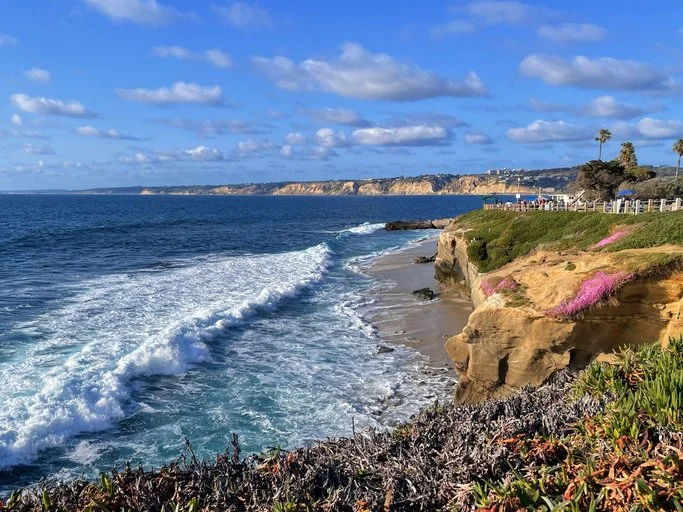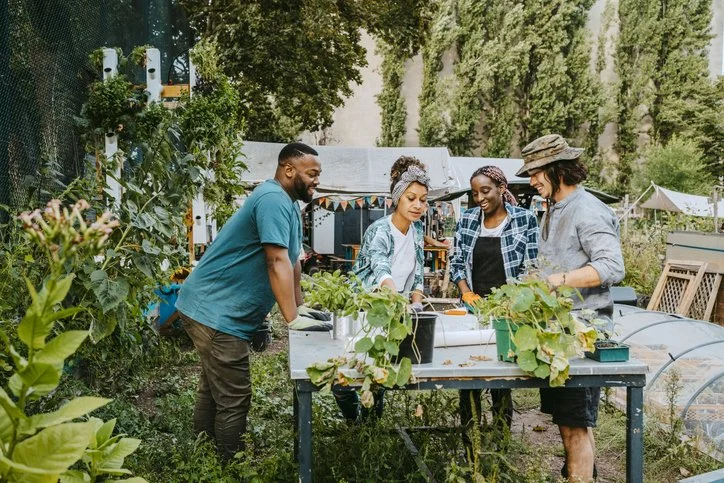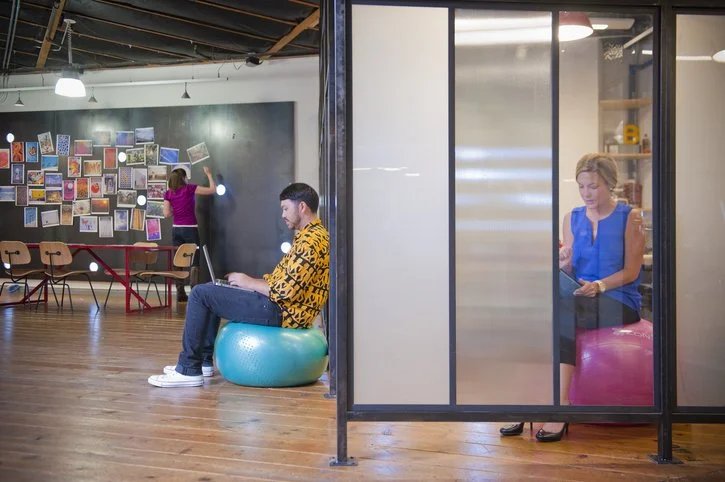San Diego: A Living Model for Holistic Health and Well-Being
By Joy Stephenson-Laws, Holistic Coach, J.D., Founder
San Diego’s distinction as the 3rd happiest city in the U.S. and 34th in the world isn’t merely a reflection of its sun-drenched beaches and temperate climate. It is proof that when a city intentionally weaves together social, environmental, economic, institutional, medical, and mobility systems, it creates a thriving ecosystem for every individual’s holistic health—body, mind, and spirit. Below, we explore each of these six dimensions in essay-style prose, supplemented with bullet-pointed highlights, and close with a true story of a local whose life was transformed by these very principles.
Citizens: The Heartbeat of Connection
At the core of holistic health lies our instinctive need for belonging and shared purpose. In San Diego, neighborhoods fold into one another through intentional gathering spaces and volunteer networks:
Community Hubs:
Community gardens and story cafés serve as informal “living rooms,” where people of all ages collaborate on urban agriculture, exchange life stories, and build empathy.Service Pathways:
Youth mentorship circles and beach-cleanup crews unite participants in acts of service that not only improve the environment but also strengthen social bonds.
These social structures do more than fill our calendars—they buffer us against isolation, lower stress hormones, and reinforce a sense of meaning that clinical treatments alone cannot provide. By regularly coming together, residents nurture a collective resilience that carries into every aspect of their daily lives.
Governance: The Framework of Trust
When civic systems operate transparently and responsively, they free residents’ mental bandwidth for creativity, recreation, and self-care:
Open Feedback Loops:
Programs like “Open Streets” empower citizens to propose—and vote on—temporary pedestrian zones, giving people a direct hand in shaping their neighborhoods.Real-Time Communication:
Instant alerts about transit delays or water-main repairs eliminate the anxiety of the unknown, creating predictability in daily life.
This foundation of trust extends beyond municipal services: it fosters a broader sense of safety in public spaces and confidence that individual voices matter. When people feel heard and supported by their city, they invest more deeply in community initiatives and local well-being.
Environment: Nature as Healer
Access to clean air, green spaces, and natural beauty is one of our most potent tools for physical and mental rejuvenation:
Balboa Park, San Diego
Urban Oases:
Balboa Park’s 1,200 acres of gardens, trails, and cultural venues invite daily immersion in restorative greenery.Eco-Therapy Offerings:
Guided forest-bathing walks and “beach mindfulness” sessions combine gentle movement with sensory awareness, harnessing nature’s power to soothe the nervous system.
Moreover, San Diego’s commitment to sustainable urban planning—such as drought-tolerant landscapes and native-plant initiatives—ensures that these benefits endure even during environmental stresses. As research shows, regular contact with nature reduces cortisol levels, elevates mood, and sharpens cognitive performance, all key components of a vibrant, holistic life.
Economy: Work That Nourishes
Financial stability and meaningful work are inseparable from our sense of self-worth and security:
Diverse Opportunities:
San Diego’s economy spans biotechnology, defense, tourism, and cross-border trade, offering resilience against industry-specific downturns.Wellness-Oriented Workspaces:
Co-working hubs integrate standing desks, quiet meditation pods, and peer coaching to support both productivity and personal well-being.
The city also nurtures entrepreneurial ventures in the wellness sector—everything from farm-to-table cafes to cryotherapy studios—providing avenues for passion-driven careers. When people feel fairly compensated and engaged in purposeful work, they experience less chronic stress and build the financial freedom to invest in health-promoting choices.
Health: Preventive Meets Integrative
A holistic approach to health pairs advanced medical care with preventive and complementary therapies:
Cross-Disciplinary Clinics:
Teams of physicians, acupuncturists, and nutritionists collaborate on patient plans, addressing root causes rather than symptoms alone.Community Wellness Festivals:
Annual city-sponsored events offer free screenings, movement classes, and cooking demonstrations—lowering barriers to healthy lifestyles.
In addition, San Diego’s network of mental-health resources—from peer-led support groups to integrative psychiatry practices—ensures that emotional and psychological well-being receive equal emphasis. By prioritizing both cutting-edge treatments and grassroots prevention, the city empowers residents to maintain vitality and redirect energy toward personal growth and joy.
Mobility: Movement as Medicine
How we move through our city affects our physical fitness, mental clarity, and social connection:
Active-Transit Incentives:
Bike-share credits for public-transit users and “walk-and-talk” meeting policies turn transportation into an opportunity for gentle exercise and conversation.Slow-Street Sundays:
Closing select roads to cars on weekends transforms streets into community plazas, dance floors, and play areas—reinforcing social ties and reducing sedentary behavior.
These initiatives not only reduce traffic congestion and emissions but also foster spontaneous social interactions—neighbors stopping to chat on a shared bike path or families playing in a repurposed street. Such moments weave health and happiness directly into the urban fabric.
The Historic Gaslamp Quarter, San Diego
Real-Life Story: Kathy Hunyor’s Transformation
Meet Kathy Hunyor, a retired educator whose journey illustrates how San Diego’s six pillars converge in a single life:
After her children left home, Kathy faced feelings of emptiness and mild depression.
She began volunteering at the Inez Grant Parker Rose Garden in Balboa Park, leading tours and tending roses two afternoons a week.
Impact Across the Six Dimensions
Citizens: Found new friendships among fellow volunteers, easing loneliness.
Governance: Clear volunteer guidelines and supportive park staff deepened her trust in local institutions.
Environment: Daily immersion in blooms and birdsong became her primary stress reliever.
Economy: Though unpaid, contributing to a living cultural asset restored a sense of purposeful work.
Health: Pruning, walking, and garden tasks provided moderate exercise, boosting stamina.
Mobility: Bicycling to the park replaced car trips, enhancing mood before her volunteer shifts.
Within six months, Kathy reports better sleep, renewed social connections, and a revived zest for life—proof that when urban design and personal action align, holistic well-being naturally follows.
Bringing It Home: Your Personal Roadmap
You don’t have to live in San Diego to apply these lessons. Here are six simple steps to cultivate holistic health in your own community:
Connect Regularly: Establish a weekly check-in circle with friends or family.
Engage Civically: Attend a town-hall meeting or participate in a local online forum.
Embrace Nature: Spend at least 15 minutes daily in a park, garden, or green space.
Align Your Work: Identify one passion project that feeds your values and joy.
Balance Care: Combine preventive practices (sleep, nutrition, movement) with periodic professional check-ups.
Move Mindfully: Replace one short drive per week with walking or biking—perhaps by scheduling a “walk-and-talk” with a colleague.
Each of these practices mirrors San Diego’s urban strategies on a personal scale—transforming everyday routines into opportunities for connection, rejuvenation, and purposeful living.
Sources
Social Relationships & Health:
Holt-Lunstad J, Smith TB, Layton JB. “Social Relationships and Mortality Risk: A Meta-analytic Review.” PLoS Med. 2010;7(7):e1000316. https://doi.org/10.1371/journal.pmed.1000316Trust & Well-being Metrics:
Helliwell JF, Layard R, Sachs J (eds). World Happiness Report 2025. Sustainable Development Solutions Network; 2025.Nature & Mental Health:
Twohig-Bennett C, Jones A. “The Health Benefits of Greenspace Exposure: A Systematic Review and Meta-analysis.” Environ Res. 2018;166:628–637. https://doi.org/10.1016/j.envres.2018.06.030Economic Status & Health:
Marmot M. “Status Syndrome: How Your Social Standing Directly Affects Your Health.” BMJ. 2010;341:c6338. https://doi.org/10.1136/bmj.c6338Integrated People-Centred Care:
World Health Organization. Framework on Integrated, People-Centred Health Services. Geneva: WHO; 2016.Active Commuting Benefits:
Oja P, et al. “Health Benefits of Cycling: A Systematic Review.” Scand J Med Sci Sports. 2011;21(4):496–509. https://doi.org/10.1111/j.1600-0838.2011.01299.x






